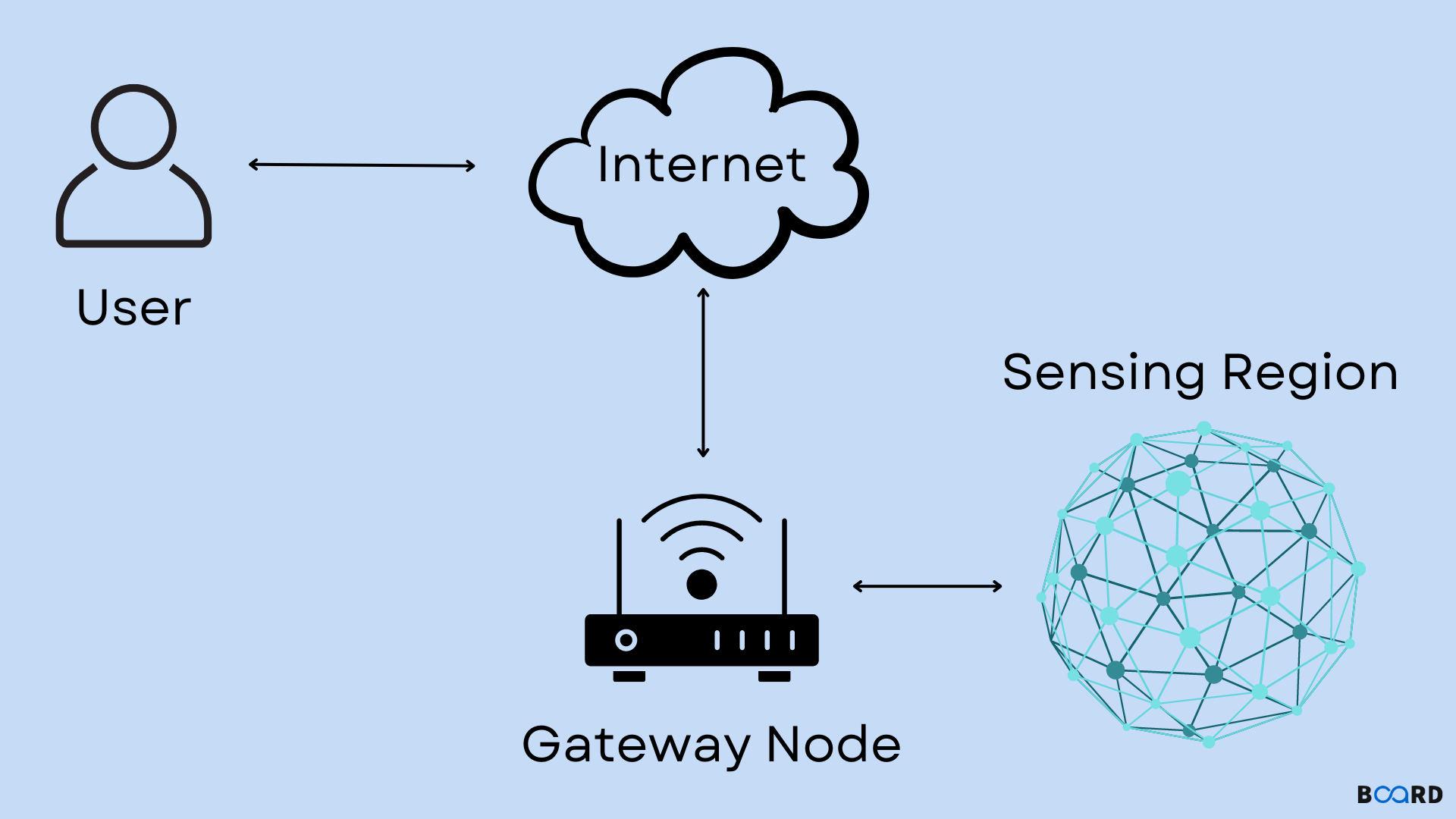Introduction to Computer Networking
Wireless sensor networks (WSNs)

Introduction
Wireless sensor networks (WSNs) are networks of specialized, geographically scattered sensors that track and record environmental physical variables and transmit the gathered information to a centralized point.
Environmental factors including temperature, sound, pollution levels, humidity, and wind may all be measured by WSNs.
These are comparable to wireless ad hoc networks in that they depend on the wireless connection and the emergence of networks on their own to transmit sensor data wirelessly. WSNs monitor environmental or physical parameters including pressure, sound, and temperature. Modern networks are bi-directional, providing data collection and sensor activity management. Military uses like battlefield monitoring prompted these networks' creation.
Applications
- Monitoring and surveillance for security and danger identification
- Internet of Things
- Temperature, humidity, and air pressure in the environment
- The noise level in the immediate vicinity Medical uses like a patient monitoring
- Agriculture
- Detection of Landslides
Advantages
It is scalable, thus it can always accommodate new nodes or devices.
- It is adaptable and so susceptible to physical divisions.
- Access to any WSN node is possible via a centralized monitoring system.
- It doesn't need wires or connections because it is wireless by nature. Refer to the distinction between a wired and wireless network.
- WSNs may be used extensively and across many industries, including mining, healthcare, surveillance, and agriculture.
- It employs several security algorithms in accordance with the underlying wireless technologies and so offers customers and users a dependable network.
Drawbacks
The following are WSN's shortcomings or drawbacks:
- Due to its wireless nature, it is vulnerable to hacker attacks.
- Due to its design for low-speed applications, it cannot be utilized for high-speed communication.
- Building such a network is costly, thus not everyone can afford it.
- There are several issues in WSN that need to be taken into account, including energy efficiency, bandwidth restrictions, node prices, deployment strategies, software/hardware design limits, and more.
- When a central node in a star topology-based WSN fails, the entire network goes down.
